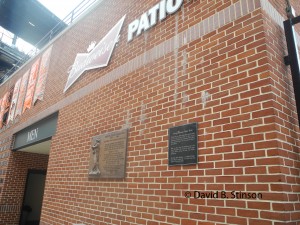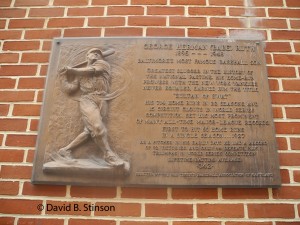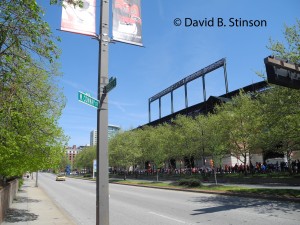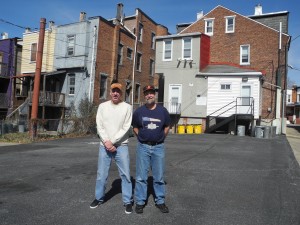Chances are most baseball fans who park north of Camden Yards in the garages on Eutaw Street do not know the historical significance of the building they pass just before crossing Lombard Street on the way towards Camden Yards. That building, which currently houses The Goddess, a self-proclaimed “Gentlemen’s Club,” was once owned by Babe Ruth, and the sidewalk outside the building is where Ruth’s father died after injuries he sustained while trying to break up a brawl.
“The past exists all around us, you just have to know where to look.” This has been my motto for years and is one of the themes running through my book Deadball, A Metaphysical Baseball Novel. Babe Ruth’s ties to Maryland are a good example of this theme, from the house where he was born, to the orphanage and baseball field where he grew up, to the Catholic church where he was married. Other places tied to the Babe, while equally notable, are a little more difficult to detect, such as the home field where he played for the International League Baltimore Orioles, which is now a McDonald’s restaurant.
The same is true for the three-story building located at 38 South Eutaw Street. In 1915, Ruth’s Boston Red Sox won the World Series and legend has it that Ruth took part of his World Series earnings and purchased the building as a bar for his father, which became known as “Ruth’s Cafe.” Babe Ruth and his wife Helen lived above the bar on the second floor of the building during that following winter.
The only known photograph of the Babe and his father was taken inside the building in December 1915. Babe is seen standing behind the bar in the center of the photograph while his father, dressed in the same bartenders attire, is standing to the right. It being the Christmas season, the bar is decorated with ornaments and tinsel.
Just two plus years after Ruth purchased the building, tragedy struck as Ruth’s father died in the street outside the building. The brawl he tried to break up is said to have involved one of his relatives.
Ruth’s Cafe on Eutaw Street should not be confused with another establishment of the same name which Ruth’s father ran on West Conway Street. Prior to the construction of Camden Yards, Conway Street street ran northeast across what is now home plate, through the pitcher’s mound and second base, and across center field towards the green batters eye behind center field.
The memory of Ruth’s Cafe is honored at Oriole Park’s Budweiser Patio on Eutaw Street.
A plaque on the side of the Budweiser Patio honors Babe Ruth. It was erected by the “Old Timer’s Baseball Association of Maryland” although its age and appearance suggest it was relocated from another venue.
The sign next to the Babe Ruth plaque relates a short history of the Ruth’s Cafe on Conway Street.
A section of West Conway Street remains just southwest of Oriole Park and a sign for the street is located on Russell Street across from the main ballpark entrance at Schaefer Circle.
When the State of Maryland excavated the area during construction of Camden Yards, bricks from the building at 406 West Conway Street were unearthed and one is now on display at the Babe Ruth Birthplace Museum.
Yes, the past is all around us. We just need to know where to look. Should you find yourself making your way down Eutaw Street on the way to Camden Yards, be sure to stop at the Goddess and take a moment to appreciate it’s historical significance. Of course, it being a strip club, I will leave it to you to decide whether the building is better appreciated from the outside, as opposed to from inside the establishment.


















